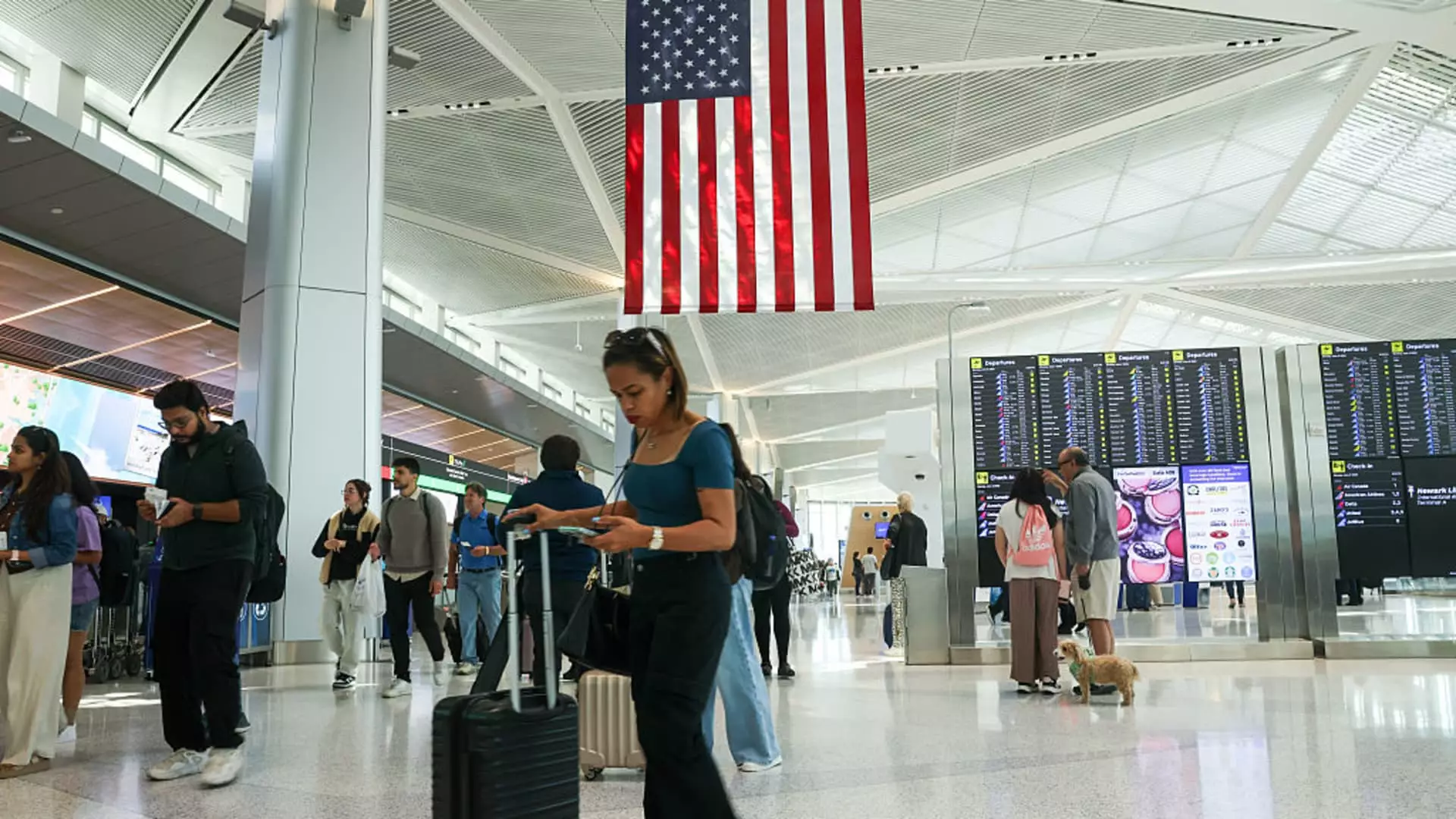The dominant narrative paints a picture of a bustling, resilient airline industry enjoying a relatively strong summer, buoyed by record-breaking traveler numbers and falling airfare prices. Yet, beneath this façade lies a landscape riddled with instability and unresolved economic tensions. Consumer confidence seems to be wavering in quiet, yet undeniable, ways. Airlines are broadcasting their stability, but the truth is that their recent actions—reducing flights and cautionary forecasts—betray a deep-seated anxiety. The summer boom, while superficially impressive, masks a more troubling reality: a fragile industry teetering on the brink of slowdown due to waning demand, political uncertainties, and economic headwinds.
The current dip in fares, touted as a boon for travelers, signals a strategic shift—airlines are resorts to price slashing in an effort to lure customers amid tepid demand. While customers rejoice at the prospect of cheaper tickets, it is a sign of an industry desperate to fill seats, not a reflection of thriving markets. The assumptions of unending growth are undercut by the emerging evidence that the airline sector, historically cyclical and sensitive to macroeconomic shifts, is losing its momentum quicker than policymakers and industry leaders care to admit.
Lingering Uncertainty and the Ripple Effects of Political Turbulence
Perhaps the most insidious threat to the aviation sector stems not from within its industry but from the broader geopolitical climate. The economic outlook remains marred by unpredictable tariffs, often administered whimsically depending on the political breeze. The Trump administration’s sparing and unpredictable trade policies have left airlines and travelers alike in a state of unease. Such uncertainty hampers investment, disrupts planning, and dampens the desire to expand services or attract international visitors—an essential pillar of profitability for many airlines.
Fewer international visitors and tightened travel restrictions serve as silent killers of revenue. This is a problem that cannot be solved by lowering fares alone. It is underpinned by complex geopolitical currents that threaten to choke off the international travel boom many have counted on. While airlines report stability, their forecasts for the future are thinly veiled acts of cautious optimism rather than signs of actual growth, hinting at a future clouded with unpredictability.
The Mirage of Economic Resilience
Contrary to glowing narratives of resilience, recent economic data cast doubt on the industry’s robustness. June’s decline in air travel spending by nearly 12% compared to last year indicates that consumer confidence may be retreating faster than industry optimistic forecasts suggest. While employment figures remain strong, the trickle-down effect on discretionary spending, such as air travel, is starting to show cracks.
This disconnect highlights one core issue: a resilient macroeconomic environment does not automatically translate into sustained demand for leisure and business travel. The bubble of optimism around jobs and consumer spending is showing signs of deflating—yet airline executives and investors cling to the hope that demand will rebound. The reality, however, appears far more complicated, with capacity cuts and cautious outlooks shaping the industry’s near future. Such measures, while necessary for financial survival, will further exacerbate the uncertainty, creating a self-fulfilling prophecy of stagnation.
The Hidden Crisis of Overcapacity and Inheritance of Past Success
Airlines are caught in a paradoxical situation—overcapacity, despite declining demand, leading to price wars and squeezing profit margins. Excess flight routes, especially on off-peak days, represent a perilous gamble that risks long-term financial health for short-term revenue. The industry’s aggressive expansion in previous years now conflicts with current realities, as profit margins contract and competitive pressure intensifies.
This overextension is not just a symptom of poor planning; it exposes a deeper flaw—the false confidence that-demand growth would continue indefinitely. Now, facing declining fares and sluggish demand, airlines are forced to confront their past overconfidence with capacity reductions that could stifle future growth. This vicious cycle underscores a broader reckoning: the industry’s relentless pursuit of market share, often at the expense of profitability, may well have sown the seeds of a long-lasting downturn.
The Underlying Struggle for Industry Survival
Ultimately, the entire sector is grappling with a fundamental question: whether it can adapt swiftly enough to a rapidly shifting environment. The optimism surrounding summer travel does little to offset the undercurrents of decline, which are charting a cautious course into the second half of the year. As airlines navigate this murky terrain, their focus must shift from superficial indicators of success to strategic resilience—rethink capacity, reassess international strategies, and address the vulnerabilities exposed by recent global disruptions.
These challenges are not insurmountable, but they require a fundamental recalibration. The industry must embrace change urgently, stepping away from the illusion of perpetual growth and preparing for a future that demands flexibility, innovation, and a recognition of the new geopolitical and economic realities reshaping global air travel.

